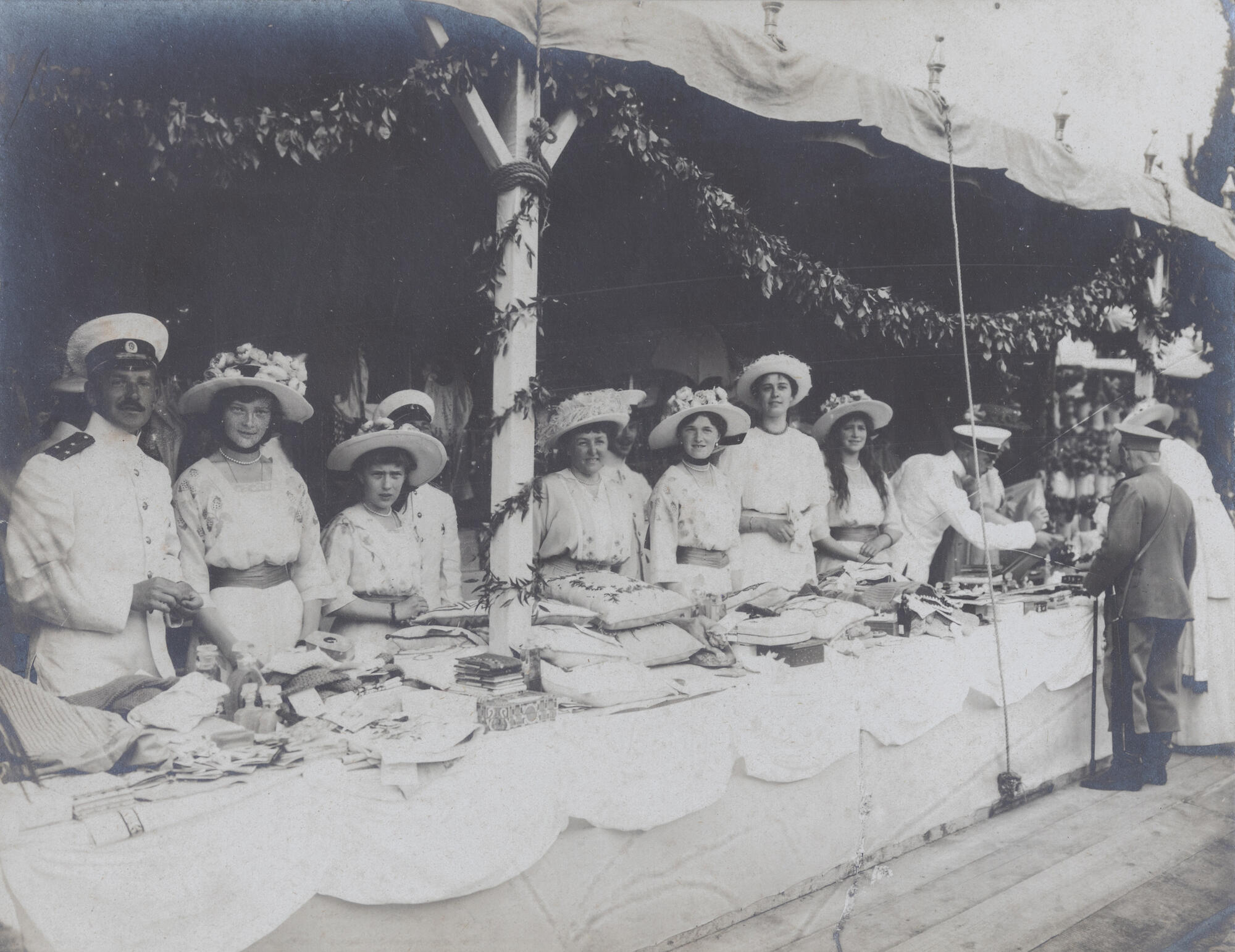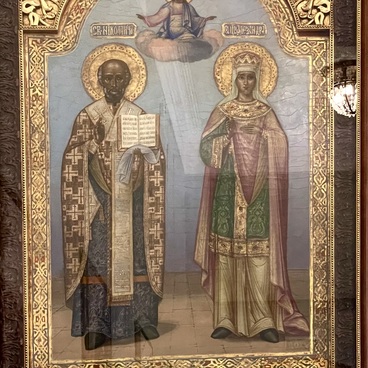The Livadia Palace Museum displays a rare mounted black-and-white group photograph “Charity Bazaar”, taken between 1910 and 1912. The photo depicts one of the charity bazaars held by Empress Alexandra Feodorovna in Yalta.
The photograph shows a group of people at a long table. On the left is a man in military uniform, next to him are Grand Duchesses Tatiana and Anastasia in light-colored dresses and headdresses, further on is a woman in a wide-brimmed hat, Grand Duchess Olga, and a tall girl in a light-colored outfit, Grand Duchess Maria. Next to Maria, a man in military uniform offers goods to customers. On the table are laid out goods, above the table is a canopy supported by poles decorated with garlands.
“The bazaar exhibition works very well. Our things are bought up before they appear; each of us manages to make a pillow and a cover every day,” the Empress wrote to the Emperor during World War I.
At the beginning of the 20th century, all strata of Russian society were involved in charity work, taking part in various public events to raise donations for those who were ill and suffering. A number of members of the imperial family also took part in charity and founded societies to help the poor and the sick with their own funds. Large charitable organizations (then their role was performed by departments and committees) operated under the direct supervision of the Emperor. The imperial family showed a lot of concern for the upbringing of children and the development of their morals. Сharity and philanthropy were an integral part of their lives. Trained since childhood to work hard, the Empress Alexandra Feodorovna founded the Society of Needlework, whose members — representatives of high society — were obliged to make at least three things a year for the poor. In addition, the Empress organized large bazaars in 1910–1914: the proceeds were donated to funds to help tuberculosis patients and the poor. With the participation of Empress Alexandra Feodorovna and her children, two charity festivals were held on the pier in Yalta, One of them is depicted in the photo.
The photograph shows a group of people at a long table. On the left is a man in military uniform, next to him are Grand Duchesses Tatiana and Anastasia in light-colored dresses and headdresses, further on is a woman in a wide-brimmed hat, Grand Duchess Olga, and a tall girl in a light-colored outfit, Grand Duchess Maria. Next to Maria, a man in military uniform offers goods to customers. On the table are laid out goods, above the table is a canopy supported by poles decorated with garlands.
“The bazaar exhibition works very well. Our things are bought up before they appear; each of us manages to make a pillow and a cover every day,” the Empress wrote to the Emperor during World War I.
At the beginning of the 20th century, all strata of Russian society were involved in charity work, taking part in various public events to raise donations for those who were ill and suffering. A number of members of the imperial family also took part in charity and founded societies to help the poor and the sick with their own funds. Large charitable organizations (then their role was performed by departments and committees) operated under the direct supervision of the Emperor. The imperial family showed a lot of concern for the upbringing of children and the development of their morals. Сharity and philanthropy were an integral part of their lives. Trained since childhood to work hard, the Empress Alexandra Feodorovna founded the Society of Needlework, whose members — representatives of high society — were obliged to make at least three things a year for the poor. In addition, the Empress organized large bazaars in 1910–1914: the proceeds were donated to funds to help tuberculosis patients and the poor. With the participation of Empress Alexandra Feodorovna and her children, two charity festivals were held on the pier in Yalta, One of them is depicted in the photo.


